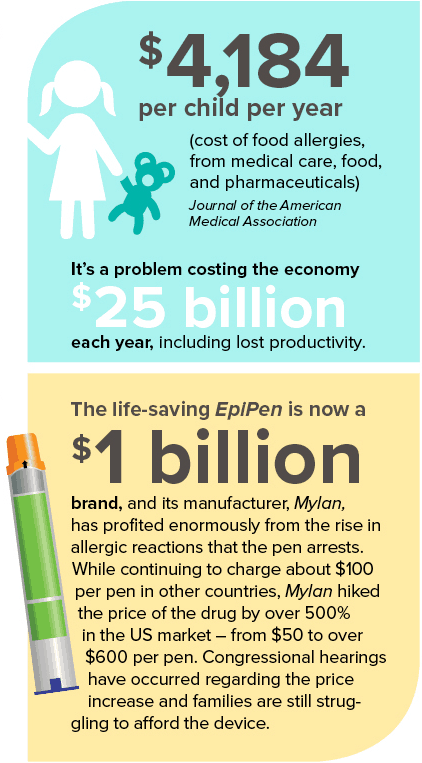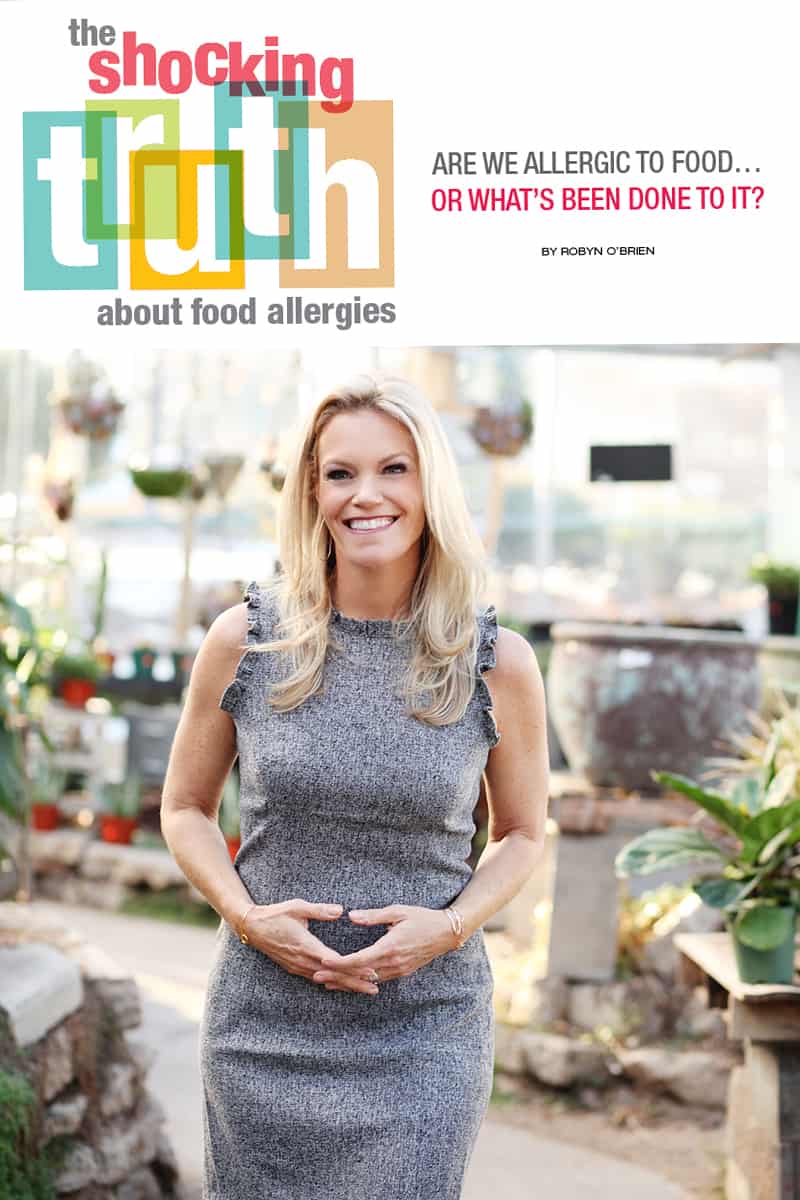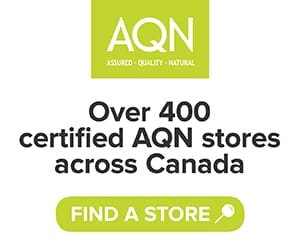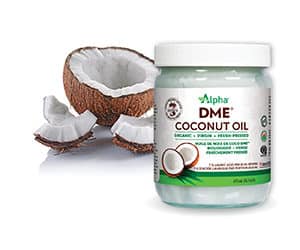Everyone loves a story with a happy ending. When we are little, we are fed those stories, the Disney fantasies, and the happily-ever-after tales. But in real life, we don’t always know how the story will end. I’m very aware of this because I’ve got a story to tell. I don’t know how it ends, but the truth is, I’m concerned. The story’s about food, food allergies, and an incident that launched me on a new and very important endeavour. It’s a personal story, but it’s one that truly impacts all of us.
MY LIFE COMPLETELY CHANGED DURING BREAKFAST ON A COLD JANUARY MORNING IN 2006
That’s when everything I thought I knew about feeding my four little kids came to a screeching halt. It was like any other day. I thought nothing of the plate of scrambled eggs and maybe even less about the blue yogurt I served… that is, until our youngest started to fuss. I thought she was tired, so I put her down for a nap. For some reason, which to this day I cannot explain, I went in to check on her.
I found her face so swollen that her eyes and mouth had swelled shut. I raced her to the emergency room. “This looks like an allergic reaction,” the pediatrician told me. “What did you feed your kids for breakfast?” And then she rattled off data on food allergies. For example, did you know that a life-threatening allergic reaction sends someone to the emergency room in North America once every three minutes? Or, that food allergies now affect one in 13 kids – two in every classroom? I didn’t.
Later, I would learn more:
- If the food allergy community were a state, it would be the fifth largest state in the U.S. by population – right after California, Texas, New York, and Florida.
- The number of people with food allergies in the U.S. is higher than the entire population of New York City, Los Angeles, and Chicago combined. In Canada, one in 13 people suffers from food allergies.
- The number of people with allergies to peanuts has more than quadrupled since 1997. And it isn’t just peanuts – allergies to milk, soy, corn, and other foods are all increasing at record rates.
- According to the Centers for Disease Control, the rate of hospitalizations from food-related allergic reactions increased a staggering 265% from 1997 to 2007.
In the ER, my heart was pounding. As I watched my baby struggle to breathe, I wanted to understand what was happening to her. When the emergency had passed, and at last the swelling and the breathing difficulties had subsided, I felt my first glimmer of love-fueled determination. The feeling has only grown over the years. Why do so many children now have life-threatening food allergies? Is it a major shift in genetics? Or is there something else going on?
NOTHING COULD HAVE PREPARED ME FOR THE ANSWERS I WOULD UNCOVER
In North America, we quickly learn that our food supply contains a lot of ingredients that did not exist 50 years ago – things such as artificial food dyes and synthetic growth hormones. In the 1950s farmers didn’t use genetically engineered foods (GMOs).
Before having kids, I was an equity analyst on an all-male team that managed $20 billion in assets, and it was my job to cover the food industry sector. I knew that major food manufacturers had removed real ingredients from their products, and replaced them with fake ones to drive margins and profitability. I also learned that in other parts of the world, some ingredients (which had become commonplace in North America), were considered harmful and were not allowed to be sold within their borders.
However, these products are only sold in North America and the consequences are clear:
• A study in the Journal of the American Medical Association says that living in North America “significantly” increases your risk of allergic disease.
“Children born outside of North America had a significantly lower prevalence of any allergic diseases (20.3%) than those born in the United States (34.5%),” said study author Jonathan Silverberg of St. Lukes-Roosevelt Hospital Center in New York. (Source)
• According to Reuters and Dr. Ruchi Gupta, who studies allergies at the Northwestern University Feinberg School of Medicine, they have seen the difference between skyrocketing allergy rates in North America and relatively minor rates elsewhere, saying: “We see that people who come from other countries don’t tend to have allergies.”
You read that right! Food manufacturers in North America save the worst and cheapest ingredients for us! It’s shocking. In all my years of studying the food industry, I’d just never thought to ask what all of these fake ingredients might be doing to the health of North American families.
That day with my daughter in the emergency room is when I resolved to find out.
The key question is whether we’re increasingly allergic to our food, or whether we have developed allergies to what’s been done to our food. With no labels on things like GMOs in the US and Canada, the biotech industry can claim that there is not a single documented case of these foods ever causing harm. Without labels, there’s no trace-ability, so there is no data – yet, we see escalating rates of allergic reactions. Correlation is not causation. But there’s clearly something going on, and it’s having a widespread effect not just on people’s health, but on the entire economy in North America.
It’s obvious that ignoring the impact of the rising numbers of allergies is irresponsible. Thankfully, there are indications that the problem is being taken seriously.
Many major companies are responding by marketing whole, real foods, the kind that pioneers of the natural health industry have been selling for over 70 years. Natural health stores were the first generation of companies to understand the enormous importance of providing access to healthy, real food, free of artificial ingredients, pesticides, and GMOs (genetically modified ingredients).
Natural health stores continue their work today, educating consumers on how to read labels and make better choices for their families, and larger corporations are following suit. Mondelez, formerly Kraft, recently acquired Enjoy Life Foods, a well-loved brand in the anti-allergy space. The company boasts products free of genetically engineered ingredients, allergens and artificial additives, and they are deeply aligned with the values of the food allergy community. This new mega-corporation plans to grow Enjoy Life into a billion-dollar brand.
 Yes, as consumers speak out with their spending dollars, companies are listening. As many shoppers are opting out of artificial and genetically engineered ingredients, demanding cleaner food for themselves and their families, corporations such as Target, Costco, Chipotle, Kroger, General Mills, and Cheerios are responding with “free of” products – free of allergens, dyes, GMOs, and artificial ingredients. At the same time, there’s renewed corporate and consumer interest in seed and soil organizations such as Plant a Seed, Demeter, the Regenerative Organic Certification, B Lab, and more. What’s incredible is that this shift in business strategy isn’t being driven by profit goals; it’s driven by a desire to attract and retain a health-conscious consumer like you and me.
Yes, as consumers speak out with their spending dollars, companies are listening. As many shoppers are opting out of artificial and genetically engineered ingredients, demanding cleaner food for themselves and their families, corporations such as Target, Costco, Chipotle, Kroger, General Mills, and Cheerios are responding with “free of” products – free of allergens, dyes, GMOs, and artificial ingredients. At the same time, there’s renewed corporate and consumer interest in seed and soil organizations such as Plant a Seed, Demeter, the Regenerative Organic Certification, B Lab, and more. What’s incredible is that this shift in business strategy isn’t being driven by profit goals; it’s driven by a desire to attract and retain a health-conscious consumer like you and me.
It looks like my story is headed for a happy ending, doesn’t it? It does, yet I remain concerned. Why? Because we need all hands on deck, not just a few isolated voices. Given what we’re up against – multi-million dollar companies that have a strong interest in doing things the way they’ve always done them – we will need to sustain the current level of pressure for many years to come, if we are to see the food allergy crisis trend downward. That day can’t come fast enough for me, or for the mothers in North America whose children are threatened daily by allergy causing food.
Like any parent whose child has been diagnosed with a food allergy, I went through a series of emotions: shock, grief, sadness, paralysis, and anger. What I thought motherhood would look like, differs greatly from what it has turned out to be for my family.
I’m different, too. That tragic breakfast changed me. Through the experience I found the courage and strength I did not know I had. I found the will to stand alone, do more, and with a combination of fear and love, to speak truth to power. “Please let my heart speak,” I pray before each speech or public appearance, so that fewer will suffer, and ever-greater numbers of people will find their own voice to stand up and speak, and it’s working. I have seen a community of love and incredible resources come together to help make the impossible possible. Countless organizations and groups have started because I found the courage to take the stage in Austin over 10 years ago to give a TEDx talk – and not because it was Robyn O’Brien’s power as a speaker, but because my heart showed that love is more powerful than fear. Love, my friends, is rocket fuel.
When my daughter first had her allergic reaction 13 years ago, I was not prepared for any of this, but I found a way. I leaned on resources, and when I didn’t find them, I created them. Just three years after my daughter’s allergic reaction, I wrote a book on my research findings – The Unhealthy Truth: How Our Food Is Making Us Sick and What We Can Do About It – published by Random House.
That was 10 years ago. Much has changed, but much remains to be done.
Just as cancer isn’t a fad, food allergies are not a “niche” problem. We need everyone’s effort to stop this epidemic – from natural health food stores to multinational food companies, and from the entrepreneurs who develop better food products to the private equity groups who fund them. It’s everybody’s job to solve this problem. We need to #rethinkfood. The future of our children’s health, our country’s economy as well as our shared quality of life depend on it.
Remember that courage is contagious. When you do brave things, it inspires others to do the same.















